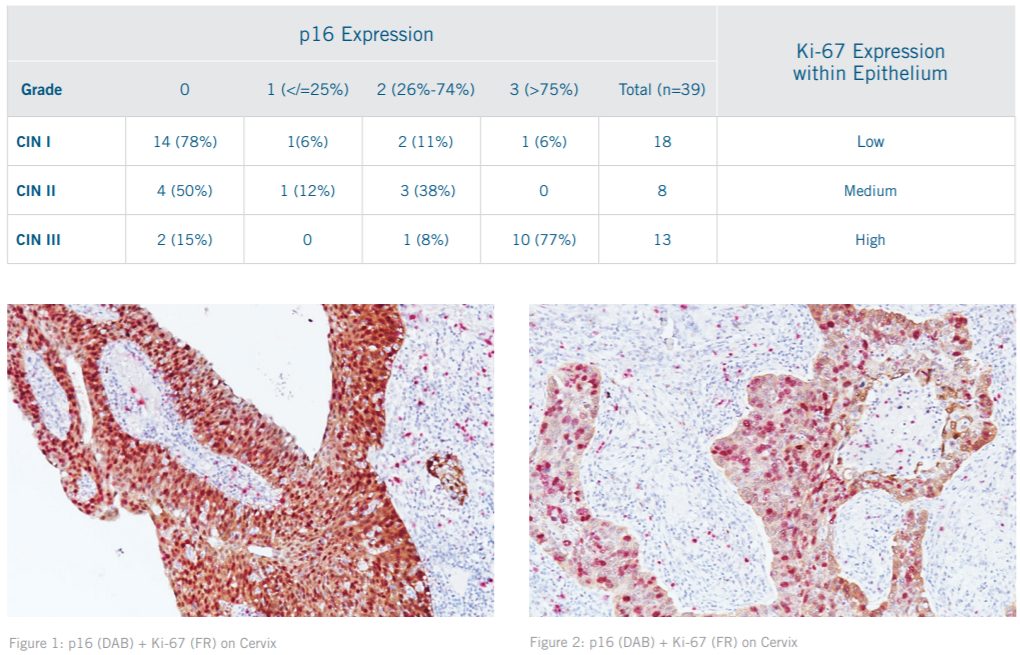Novel IVD Cocktail: p16 INK4a [BC42] + Ki-67 [SP6], significance in classification of high-risk HPV
The p16 + Ki-67 multiplex has proven an important biomarker for high-risk HPV1,2. This novel multiplex cocktail of p16 INK4a [BC42] and Ki-67 [SP6] may aid in the identification of cells co-expressing markers for both tumor suppression and cell proliferation, an indicator of cellcycle deregulation3. Using H&E diagnosis, cervical intraepithelial neoplasia (CIN) lesions were classified by evaluating the co-expression, cell proliferation, and grading of CIN lesions across multiple tissue samples.
Biocare’s p16 INK4a [BC42] + Ki-67 [SP6] was evaluated based on expression in several tissue samples with varying grades of cervical intraepithelial neoplasia lesions. Grading of lesions with the cocktail was equitable in most cases with that of the classification from the H&E, providing evidence the cocktail is useful in the detection of high-risk HPV and grading of CIN lesions. Discrepant samples were attributed to sample being cut through and no longer showing the lesion as seen in the H&E. Ki-67 was shown to have expression in all samples; expression of Ki-67 was limited to the lower third of the epithelium for CIN 1 lesions and expanded upwards to the higher third of epithelium as grade increased to CIN 3.
Table 1: p16 INK4a Expression and Relative Area of Ki-67 Expression in Epithelium

Biocare’s p16 INK4a [BC42] + Ki-67 [SP6] cocktail is a valuable and competitive addition to the market. This novel cocktail provides the ability to assess and stratify CIN lesions, as well as determine the relative risk factor for future development of high-risk HPV infection into a cervical malignancy. To learn more about the p16 INK4a or p16 + Ki-67 Multiplex contact Biocare at 800-799-9499 or by visiting the link below: https://biocare.net/product/p16-ki-67-antibody/
1. Hebbar, Ankitha, and Venkataramappa Srinivasa Murthy. “Role of p16/INK4a and Ki-67 as specific biomarkers for cervical intraepithelial neoplasia: An institutional study.” Journal of laboratory physicians vol. 9,2 (2017): 104-110. doi:10.4103/0974-2727.199630. 2. Reuschenbach M, et al. Evaluation of cervical cone biopsies for coexpression of p16(INK4a) and Ki-67 in epithelial cells. Int J Cancer 2012; 130(2): 388-394. 3. Ikenberg H, et al. Screening for cervical cancer precursors with p16/Ki-67 dual-stained cytology: results of the PALMS study. J Natl Cancer Inst. 2013;105:1550–7.

